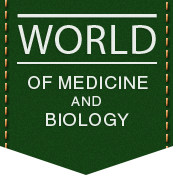| About the author: |
L. B. Markin, T. V. Fartushok, N. V. Fartushok, I. S. Pylypchuk, V. V. Flud, E. A. Dzhalilova |
| Heading |
CLINICAL MEDICINE |
| Type of article |
Scentific article |
| Annotation |
More than 82 % of women of reproductive age note pain in the mammary gland. Every fifth woman feels severe pain (mastalgia) and swelling (mastodynia) in the mammary gland. Cyclic mastalgia is combined with hyperprolactinemia. Hyperprolactinemia occurs when dopamine does not suppress pituitary function enough to reduce prolactin release. Agni casti fructus, known for its dopaminergic activity, relieves pain and discomfort in the mammary glands. 50 patients were under observation. Only 10 % of patients felt mild pain, 32 % experienced moderate pain, 50 % assessed it as severe, and 8 % experienced extreme pain. After the treatment, the complete absence of pain was noted by 76 % of patients. The results of the conducted studies indicate a high efficiency of 76 % and the safety of using Agni casti fructus in treating mastalgia and mastodynia. The high efficiency in the treatment of mastalgia and mastodynia with the herbal medicine Agni casti fructus without the additional use of hormonal drugs can be explained by the fact that this drug normalizes the hormonal balance of a woman. |
| Tags |
pain,mastalgia,mastodynia,Agni casti fructus,treatment |
| Bibliography |
- Armour M, Parry K, Manohar N, Holmes K, Ferfolja T. The prevalence and academic impact of dysmenorrhea in 21,573 young women: A systematic review and meta-analysis. J Women Health. 2019; 28:1161–1171.doi: 10.1089/jwh.2018.7615
- Bajalan Z, Moafi F, MoradiBaglooei M, Alimoradi Z. Mental health and primary dysmenorrhea : A systematic review. J Psychosom Obstet Gynecol. 2018; 40:1–10. doi: 10.1080/0167482X.2018.1470619
- Burnett M, Lemyre M. Primary dysmenorrhea consensus guideline. J Obstet Gynaecol Can. 2017; 39:585–595. doi: 10.1016/j.jogc.2016.12.023
- Escobar LK. Two new species of Passsiflora (Passifloraceae) from Northern South America. Phytologia. 2019; 69:364–367. doi: 10.5962/bhl.
- Femandez-Martinez E, Abreu-Sanchez A, Velarde-Garcia JF, Iglesias-Lopez MT, Perez-Corrales J. Living with restrictions. The perspective of nursing students with primary dysmenorrhea. Int J Enviromental Res Publ Health. 2020; 17(22):8527. doi: 10.3390/ijerph17228527
- Heskes AM, Sundram TCM, Boughton BA, Jensen NB, Hansen NL. Biosynthesis of bioactive diterpenoids in the medicinal plant Vitex agnus castus. Plant J. 2018; 93(5):943–948. doi: 10.1111/tpj.13822
- Li AD, Bellis EK, Girling JE, Jayasinghe YL, Grover SK. Unmet needs and experiences of adolescent girls with heavy menstrual bleending and dysmenorrhea: A qualitative study. J Pediatr Adolesc Gynecol. 2020; 33:278–284. doi: 10.1016/j.jpag.2019.11.007
- Matthewman G, Lee A, Kaur JG, Daley AJ. Physical activity for primary dysmenorrhea: A systematic review and meta-analysis of randomized controlled trials. Am J Obstet Gynecol. 2018; 219:e1–e255. doi: 10.1016/j.ajog.2018.04.001
- Rafieian-Kopaei M, Movahedi M. Systematic Review of Premenstrual, Postmenstrual and Infertility Disorders of Vitex Agnus Castus. Electron Physician. 2017 Jan 25;9(1):3685–3689. doi: 10.19082/3685.
- Rafique N, Al-Sheikh MH. Prevalence of primary dysmenorrhea and its relationship with body mass index. J Obstet Gynaecol Res. 2018; 44:1773–1778. doi: 10.1111/jog.13697
- Ryabukha O.I. Peculiarities of thyroidal colloid hormonal activity of white rats’thyrocytes during consumption of organic and inorganic iodine in conditions of potentiated alimentary iodine deficiency. World of Medicine and Biology 2020;4 (74): 193–198. doi: 10.26724/2079-8334-2020-4-74-193-198
- Ryan SA. The treatment of dysmenorrhea. Pediatr Clin Am. 2017; 64:331–342. doi: 10.1016/j.pcl.2016.11.004.
- Semenyna HB, Shatylovych KL, Fartushok TV, Komissarova OS, Yurchushyn OM. A new approach to the combination therapy of polycystic ovary syndrome. World of Medicine and Biology. 2020; 2(72):125–129 doi: 10.26724/2079-8334-2020-2-72-125-129
- Sogame M, Naraki Y, Sasaki T, Seki M, Yokota K. Quality assessment of medicinal product and dietary supplements containing Vitex agnus castus by HPLC fingerprint and quantitative analyses. Chem Pharm Bull (Tokio). 2019; 67(6):527–533. doi: 10.1248/cpb.c18-00725
|
| Publication of the article |
«World of Medicine and Biology» №1(87), 2024 year, 125-129 pages, index UDK 618.19-009.7-085 |
| DOI |
10.26724/2079-8334-2024-1-87-125-129 |
